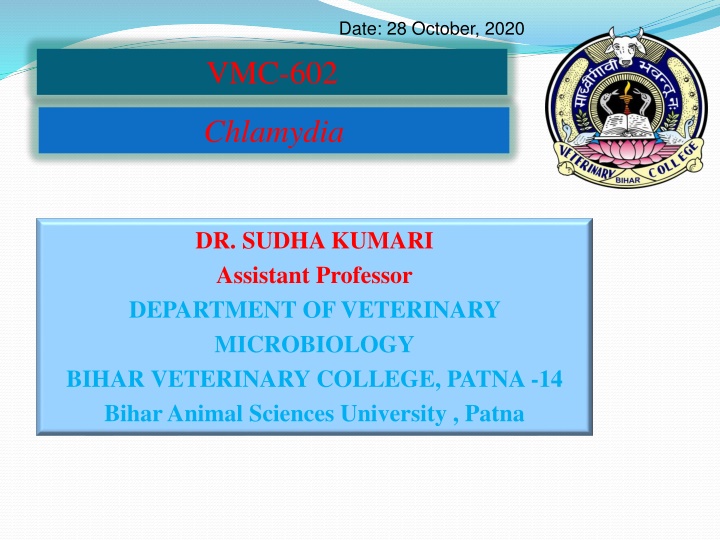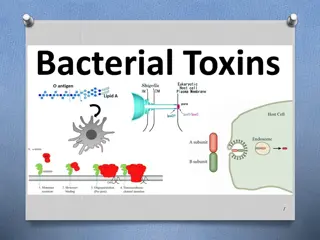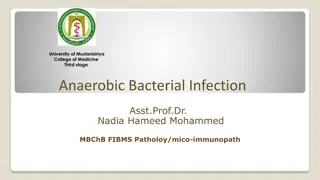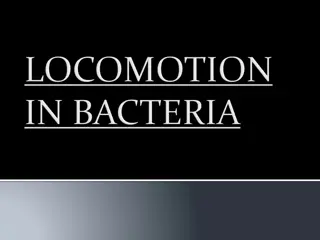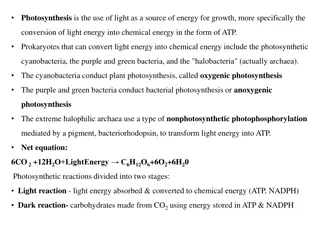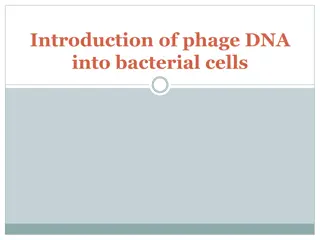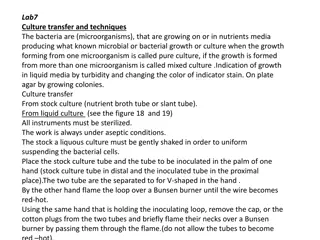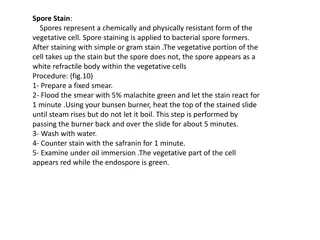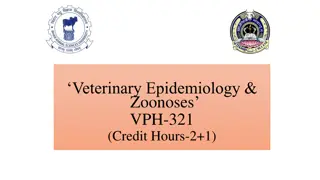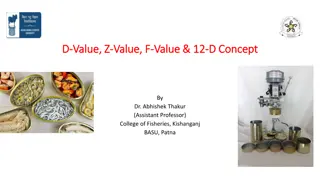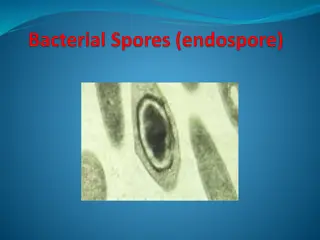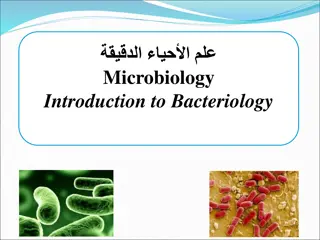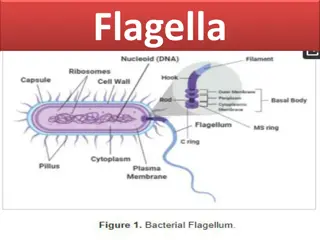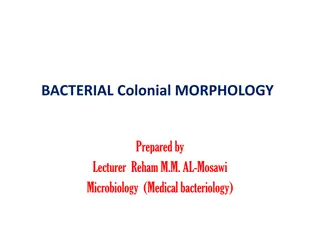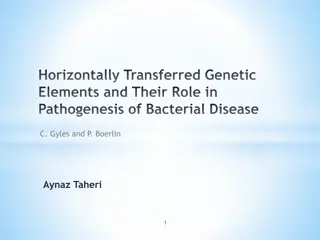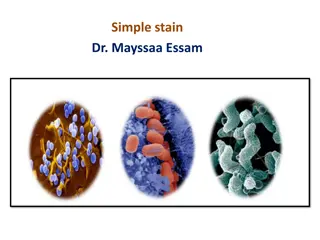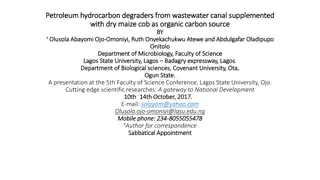Bacterial Characteristics and Implications
Chlamydia is an intracellular, nonmotile bacteria causing various diseases in humans and animals. Explore its unique developmental cycle, pathophysiology, and immunological responses. Learn about different species of Chlamydia, their host cell tropism, and implications on health.
Download Presentation

Please find below an Image/Link to download the presentation.
The content on the website is provided AS IS for your information and personal use only. It may not be sold, licensed, or shared on other websites without obtaining consent from the author.If you encounter any issues during the download, it is possible that the publisher has removed the file from their server.
You are allowed to download the files provided on this website for personal or commercial use, subject to the condition that they are used lawfully. All files are the property of their respective owners.
The content on the website is provided AS IS for your information and personal use only. It may not be sold, licensed, or shared on other websites without obtaining consent from the author.
E N D
Presentation Transcript
Date: 28 October, 2020 VMC-602 Chlamydia DR. SUDHA KUMARI Assistant Professor DEPARTMENT OF VETERINARY MICROBIOLOGY BIHAR VETERINARY COLLEGE, PATNA -14 Bihar Animal Sciences University , Patna
Chlamydiae are obligate, intracellular, nonmotile, gram-negative bacteria with a unique biphasic developmental cycle consisting of extra- and intracellular forms. It is causes a variety of human and animal diseases and much morbidity. Chlamydiae have an outer membrane that contains lipopolysaccharide (LPS) and membrane proteins. It grow only within intracellular membrane-bound vacuoles, termed inclusions, that seclude the organism from extracellular and cytoplasmic environments.
Chlamydia Chlamydia, or more specifically a chlamydiainfection, is a sexually transmitted infection caused by the bacterium Chlamydia trachomatis. Family: Chlamydiaceae Genus: C. trachomatis Urogenital infections, Conjunctivitis, Pneumonia, Lymphogranuloma venerium (LGV) C. psittaci
Psittacosis (parrot fever) C. pneumoniae Bronchitis, sinusitis, Pneumonia Atherosclerosis Morphology Small, obligate, intracellular, parasites. Contain DNA, RNA and
Gram Negative cell wall but Cell wall not well characterized Inner and outer membrane LPS but no peptidoglycan Dependant on energy molecules Can t make ATP. Chlamydiae elicit both humoral and cellular immune responses.
Pathophysiology Chlamydiae have the ability to establish long-term associations with host cells. When an infected host cell is starved for various nutrients such as amino acid , Iron, or Vitamins this has a negative consequence for Chlamydiae since the organism is dependent on the host cell for these nutrients. Long-term cohort studies indicate that approximately 50% of those infected clear within a year, 80% within two years, and 90% within three years
Macrophages are the principal host cells for C. psittaci and C. trachomatis LGV biovar, whereas the principal host cells for C. trachomatis trachoma biovar and C. pneumoniae strains are columnar epithelial cells at mucosal sites. Host cell tropism correlates with the type of inflammation elicited by chlamydiae. The LGV biovar and C. psittaci produce granulomatous inflammation, characteristic of delayed hypersensitivity reactions. The trachoma biovar produces neutrophilic exudate during acute infection and submucosal mononuclear infiltration with lymphoid follicle formation during later stages of infection.
Chlamydia can be detected through culture tests or nonculture tests. The main nonculture tests include fluorescent monoclonal antibody test, enzyme immunoassay, DNA probes, rapid Chlamydia tests and leukocyte esterase tests. Whereas the first test can detect the major outer membrane protein (MOMP), the second detects a colored product converted by an enzyme linked to an antibody. The rapid Chlamydia tests use antibodies against the MOMP, the leukocyte esterase tests detect enzymes produced by leukocytes containing the bacteria in urine.
Symptoms:- Most of the times, Chlamydia infection is asymptomatic. Common symptoms include: Pain while urinating Lower abdomen pain Rectal pain Bleeding
The starved chlamydiae enter a persistent growth state where in they stop cell division and become morphologically aberrant by increasing in size. Persistent organisms remain viable as they are capable of returning to a normal growth state once conditions in the host cell improve. There is debate as to whether persistence has relevance. Some believe that persistent chlamydiae are the cause of chronic chlamydial diseases. Some antibiotics such as -lactams have been found to induce a persistent-like growth state.
Laboratory Diagnosis C. psittaci Serology (Complement fixation test) Fourfold rise in titer. Treatment and Prevention C. psittaci Tetracycline or Quarantine of imported bird Control of bird infection. Antibiotic supplementation of food.
